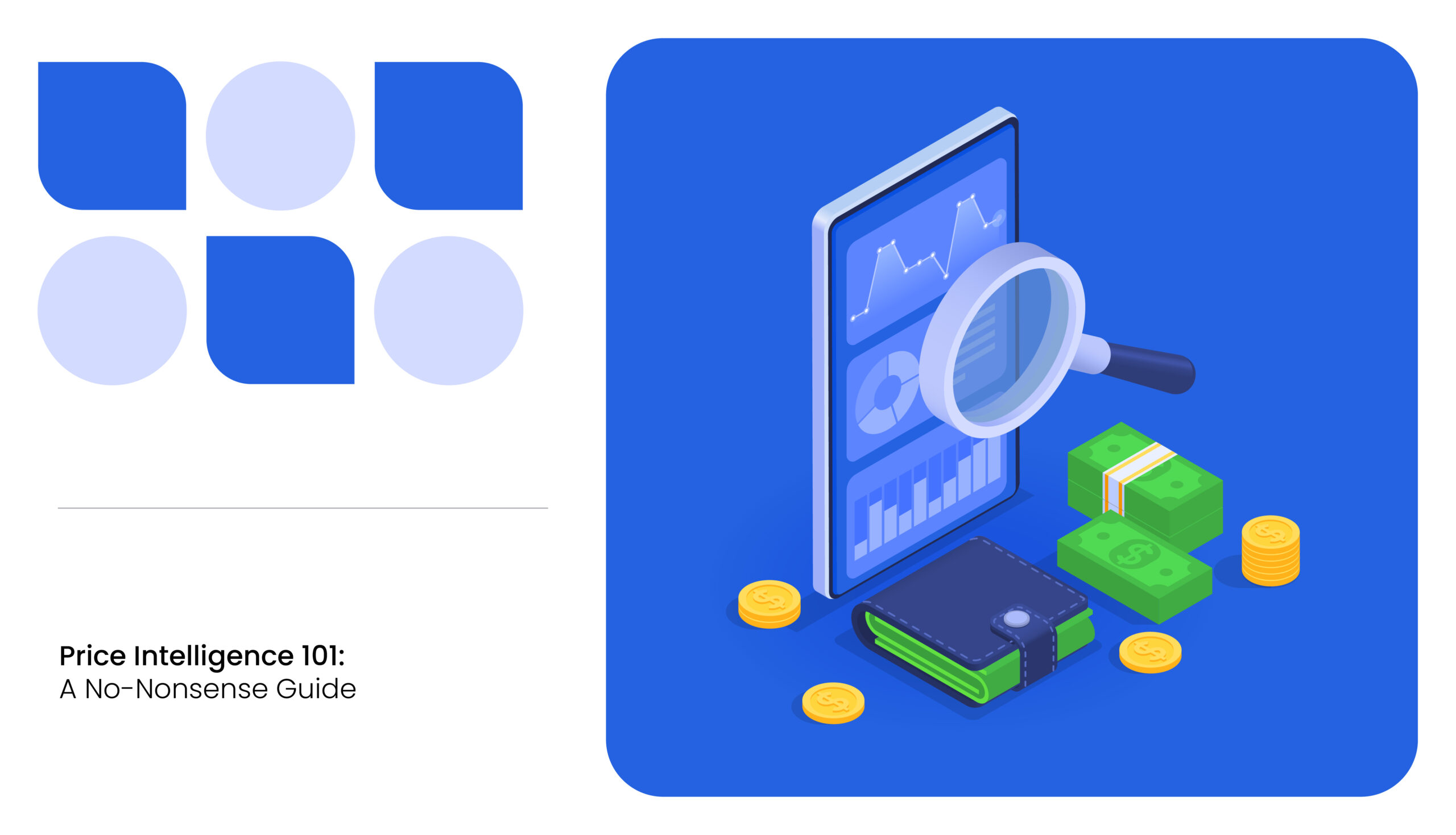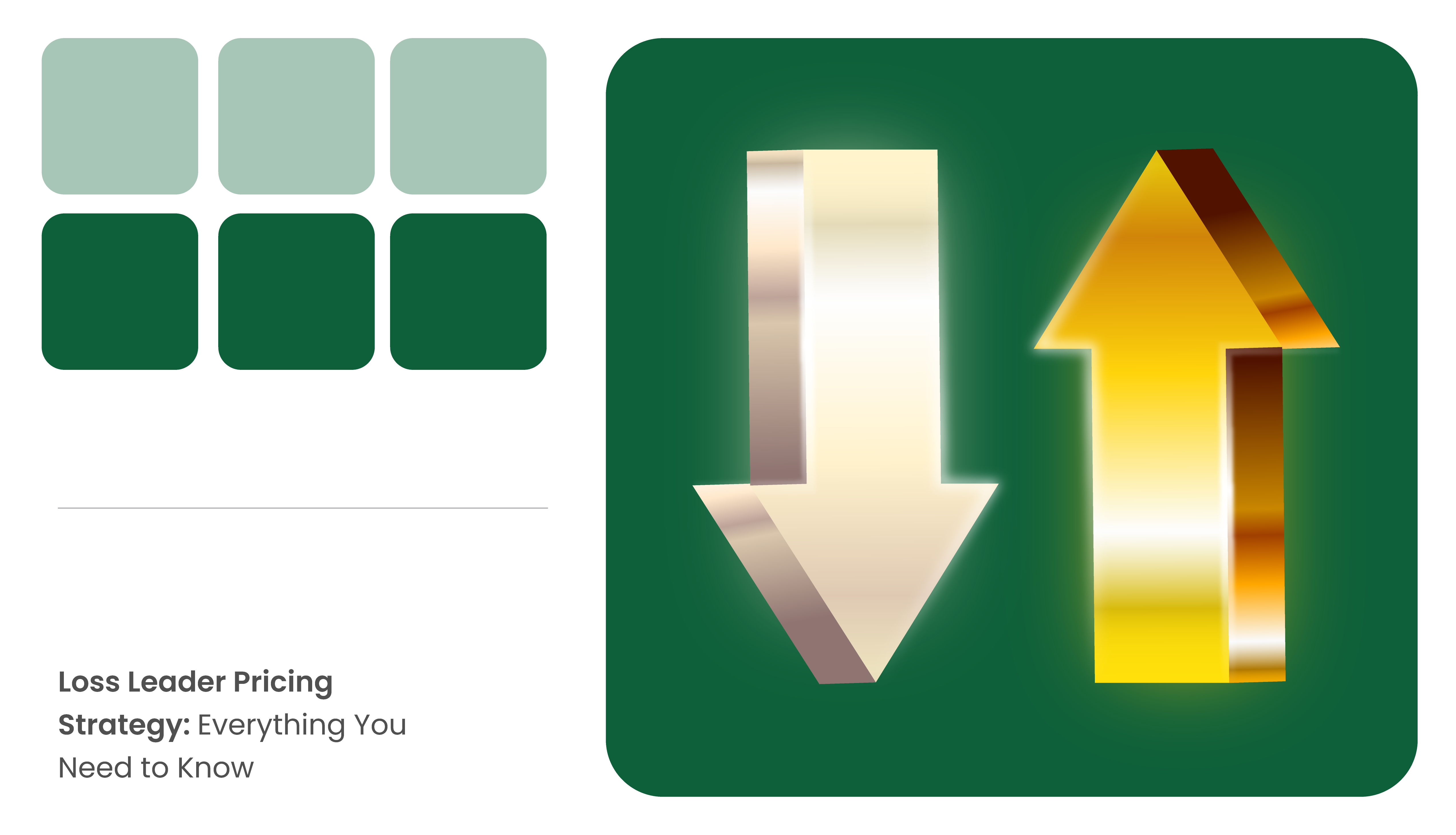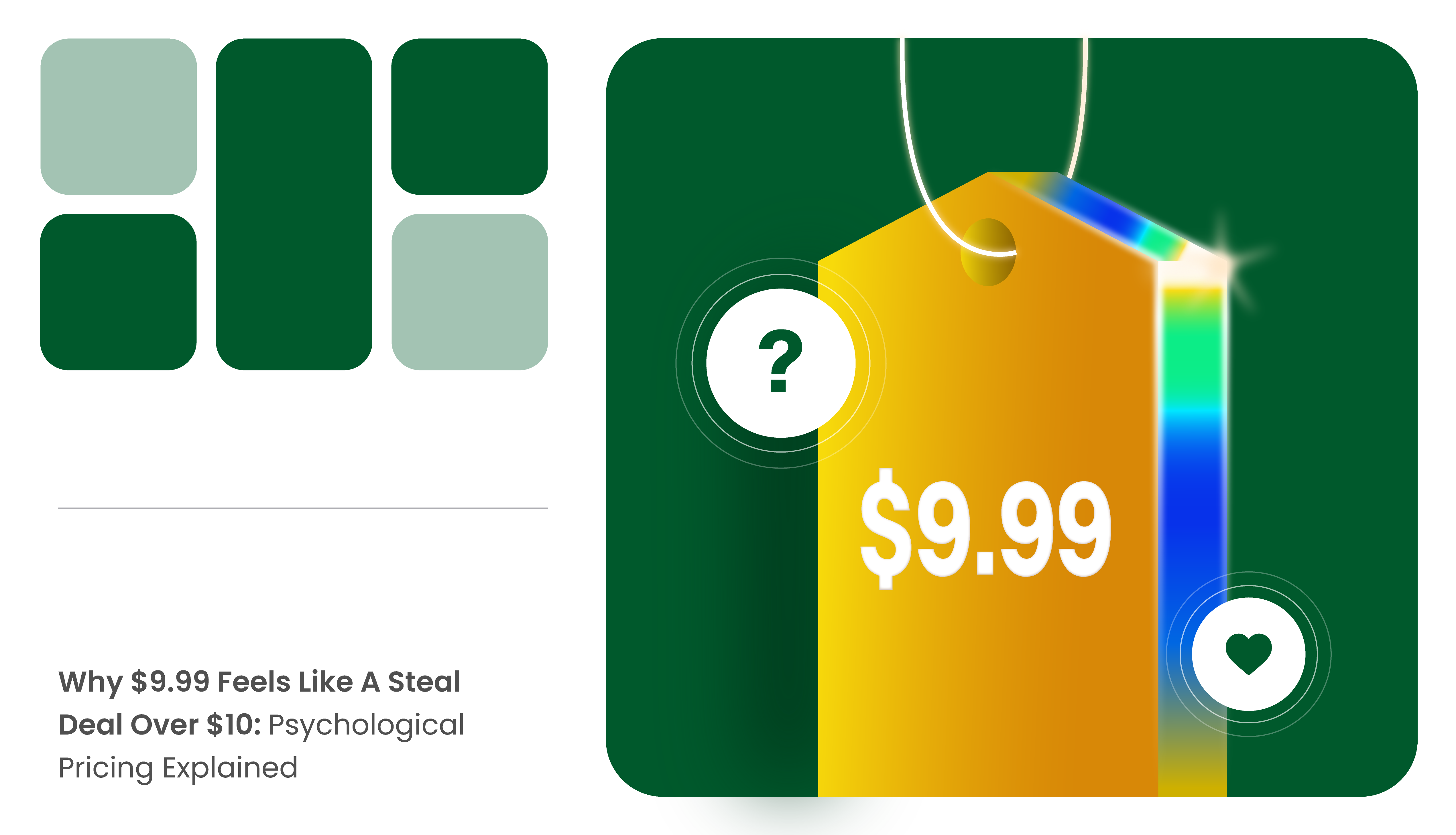In a competitive market with little product differentiation, a new entrant can stand out by selling at a low price. Even if the substitute products are slightly better, brands that compete on price tempt the mass market. The long-term aim of brands using penetration pricing is to capture the market share in their category.
What is Penetration Pricing?
‘Penetration Pricing’ is a short-term marketing strategy that brands adopt in the initial phase of the product lifecycle to increase market share.
By offering the lowest price in its category, the product intends to play the volume game. After capturing a sizeable market share, the company steadily increases the product’s price. The company’s ultimate goal is to develop long-term customer loyalty by implementing this strategy.
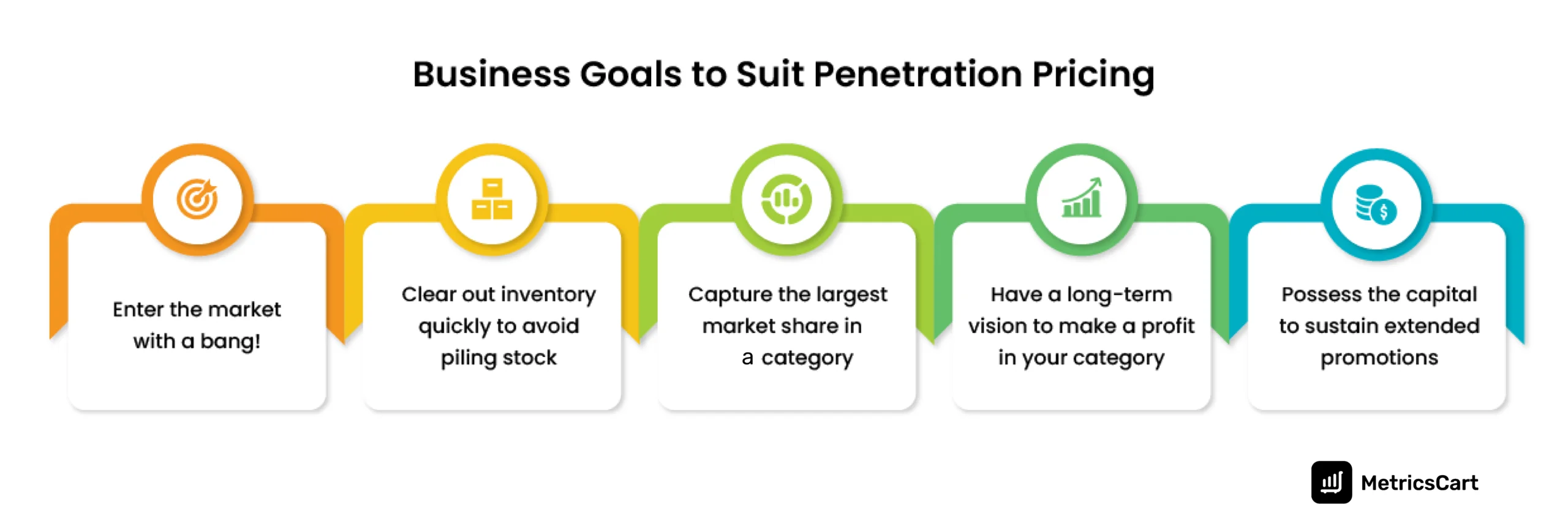
Price penetration suits products that are:
- Price-elastic
Largely, consumers of products sensitive to price variations are not brand-loyal. Introducing such products in the market with penetration pricing may help grab customer attention. - High in demand
Goods with high mass appeal and aspiration value qualify for this pricing strategy. - Scalable
To sustain high prices, the item has to sell in volume. The more orders the company receives for the product, the lesser the cost of production. - Financially Strong
To implement this pricing for a longer period without compromising quality and customer service, businesses should be financially stable.
Penetration Pricing Strategy Examples in the Industry
Most brands use penetration pricing in the first phase of the product cycle. Once the product gains enough market share, the brand shifts to a more profitable pricing strategy. Here are some examples from various industries:
- Grocery Chains Using Penetration Pricing Strategy
- Netflix Localizes Penetration Pricing
- IKEA Enters New Markets With Penetration Pricing
- Uber Wins Market Share with Penetration Pricing
Grocery Chains Using Penetration Pricing Strategy
In the case of grocery items, if there is little differentiation between brands, buyers may not mind switching their loyalty to a new brand that costs less. Yet, a group of consumers don’t mind paying a little more for premium quality and green labels. This category of shoppers buys organic food when retailers offer them at a discount or sell them at an interest-free payment.
The Organic Industry Survey 2024 shared some positive insights on organic food sales. In the US, the sales of certified organic products hit a record figure of $70 billion in 2023, up 3.4%. The organic industry, including non-food products, is expected to grow at a CAGR of 10.35% from 2024 to 2032.
As organic products cost 63% more than their non-organic counterparts, Costco and Kroger apply penetration pricing to increase the sale of organic products. They promoted the offer as a value addition to their loyal customers, Similarly, Brodington’s Market grocery store offers organic fruits at $2.99 as a mark of goodwill to new members who sign up with them.
Due to recent inflation, shoppers have shifted their loyalties to private labels that offer quality products at lower prices in consumer packaged goods. Apart from big players like Whole Foods, Walmart, Costco, and Aldi, retail chains like Sprouts, Publix, and Wegman have implemented price penetration in their premium line of private labels. These retailers are reaping the benefits because of economies of scale.
READ MORE | Want to know if Amazon and Whole Foods have benefited from each other? Read on the Advantages of Amazon Fresh vs. Whole Foods Partnership
Netflix Localizes Penetration Pricing
Blockbuster was a popular video rental company in the US that charged $4.99 as rent for three days. Thereafter, they levied a fine for each extra day.
In 1997, Netflix disrupted the rental market with a new promise. They introduced a penetration pricing scheme wherein customers could rent four movies at a time for $15.95 per month without penalty for late returns. With no late fee charged, many customers instantly joined Netflix.
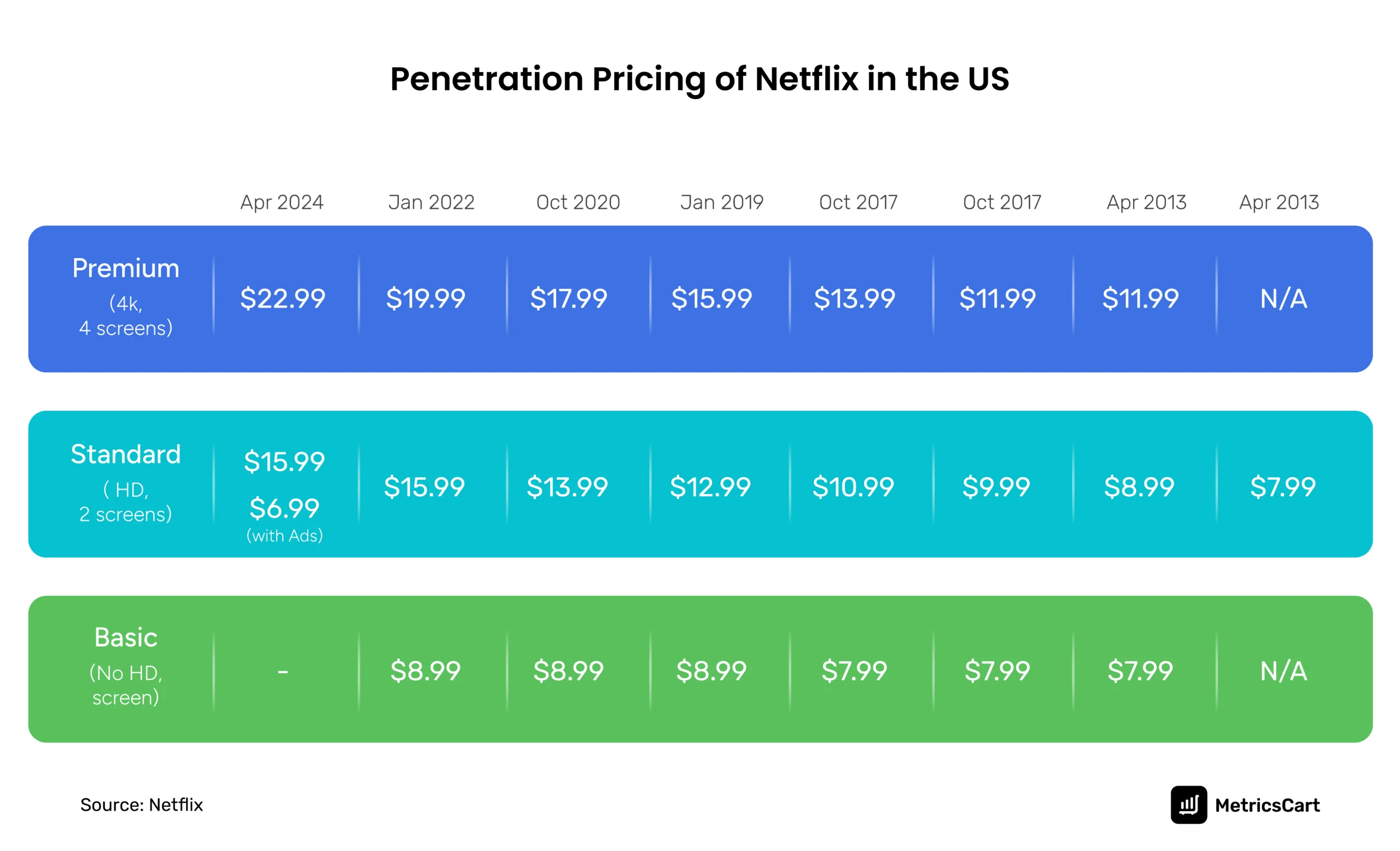
Other streaming services such as Amazon, HBO, Hulu, and Disney Plus have successfully implemented penetration pricing by offering customers discounts or free trial periods when they enter a new market.
In 2019, when Disney+ launched at an introductory offer of $6.99/month, many family subscribers shifted their loyalties, yet Netflix continued its top position with better content. Netflix’s strength lies in thoroughly understanding the client’s needs, the localized country-wise pricing, and the features that people from each region value and may readily pay.
IKEA Enters New Markets With Penetration Pricing
IKEA, a popular brand for its contemporary-style furniture, uses market penetration pricing to establish a strong presence when it enters a new region.
Once the brand makes a foothold in a place, the company uses a price match guarantee to have a competitive edge over other retailers. Alternatively, IKEA uses promotional pricing tactics to drive sales, clear inventory, or make room for new products.
Usually, all furniture brands price their items post-production depending on the cost incurred. The company follows a reverse design process, deciding the price range before designing its furniture. IKEA practices a cost leadership strategy to bring production efficiency and reduce operational costs.
Uber Wins Market Share with Penetration Pricing
Transportation company Uber uses penetration pricing to capture market share in a new city.
For instance, in New York, yellow cabs never give an estimate of the ride fare. Often, when the trip ends, customers have to pay exorbitant fares. In this background, when Uber introduced its service in 2014, the company received a cold shoulder from the customers as they observed that UberX rides were costlier in several instances than yellow cabs.
That’s when Uber used penetration pricing by reducing the fare by 20% for a limited time. The transportation company shifts to dynamic pricing once customers are hooked to their service and wins a sizeable market. In 2022, Bloomberg’s Second Measure reported Uber held 72% of the US market share for ride-hailing platforms.
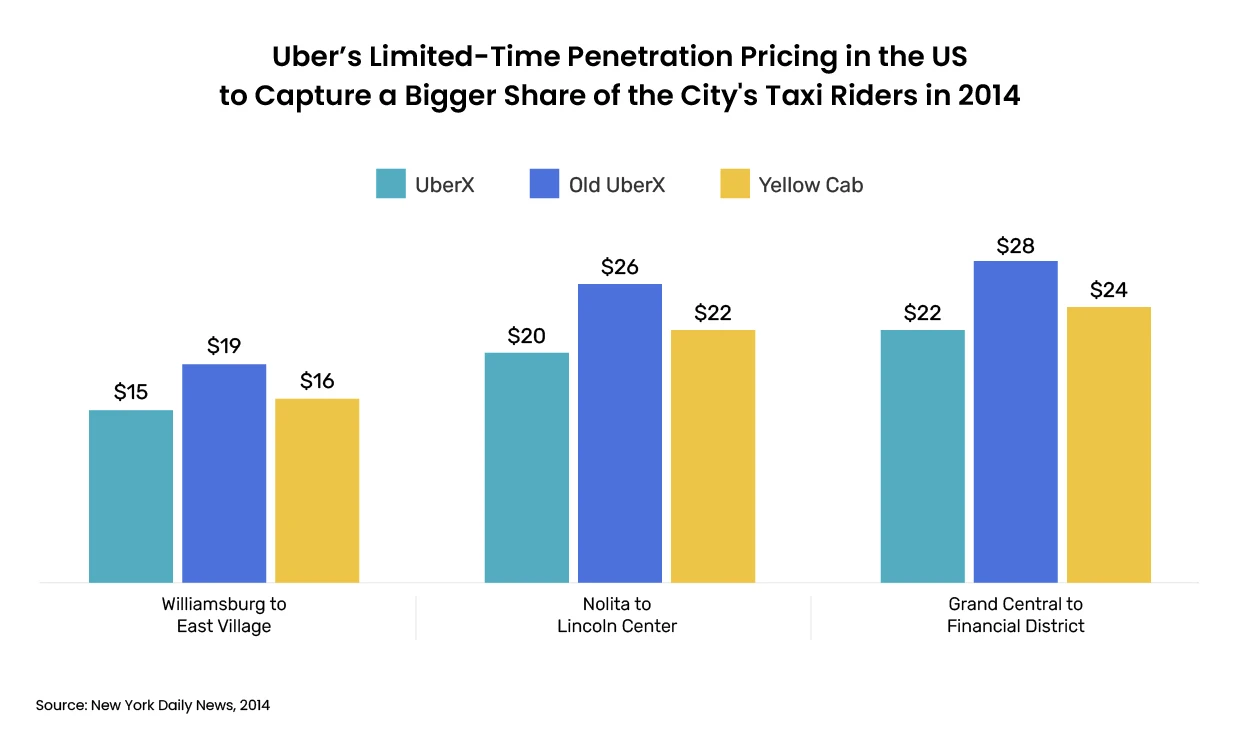
In dynamic pricing, the company decides on an optimal price based on advanced big data analytics and rich customer insights. When the demand for a ride exceeds the number of cabs available, the price per trip goes as high as 8 times the normal price. And when there are more cabs around the requested location but not much demand for rides, the price drops.
READ MORE | Curious about other pricing strategies? Read our detailed blog on Best Pricing Strategies for E-Commerce That Help Scale Business.
Advantages and Disadvantages of Penetration Pricing
The demand for a product increases manifold in penetration pricing as the price is low. The challenge is to prevent this demand from dwindling with the price increase.
Pros
- It is one of the fastest methods to increase the customer base.
- Limited-time discount encourages customers to act quickly.
- Higher sales volume leads to lower production costs.
- If the brand gets consistently high volume, revenue increases.
- Fast inventory turnover opens the way for new collections.
- Selling at a lower price prevents competitors from entering the market.
Cons
- Smaller business groups may be unable to sustain low prices for long.
- The brand incurs loss until it meets the expected business goal.
- This strategy may result in a price war if the competitors are very strong.
- If a new brand with a low price tag is introduced by an unestablished company, customers might perceive the product as inferior.
- The challenge lies in retaining customers when the price increases later.
Strategies Confused with Penetration Pricing
Price Skimming vs. Penetration Pricing
The price skimming strategy is exactly the opposite of penetration pricing.
Price skimming is similar to prestige pricing. In both strategies, products are launched with a high price tag. Unlike prestige pricing, skimming reduces the price a few months after its launch. Car brands and tech-related products are highly competitive sectors. As soon as a product launches, competitors introduce products with similar features. Therefore, price skimming is a commonly used strategy in tech products.
Penetration Pricing vs. Loss Leader Pricing
The intent behind loss leader pricing strategy and penetration pricing is the same – to expand the market share. Loss leader pricing is used at any phase in a product’s lifecycle, but only brands with two complementary products can use this pricing.
In a loss leader strategy, companies sell one of their items at a loss and entice customers to buy their highly-priced complementary product. Gillette cleverly implemented this strategy of killing two birds with one stone. The brand sold its mechanical razors at a lower cost to stimulate customers to buy higher profit-generating replacement blades.
Introductory Pricing vs. Penetration Pricing
There is a very subtle difference between introductory pricing and penetration pricing. In both these strategies, low prices act as a stimulus to attract customers to buy a newly launched product.
The introductory trial price runs from one month to a year, thereafter, it goes full price. Whereas brands using penetration pricing intend to gain a large market share by selling more volume of products at low prices. Companies may extend the strategy for over a year to fulfill this goal.
All brands, irrespective of their pricing strategy, should monitor their brand and competitor pricing to succeed in online selling. Besides monitoring prices, MetricsCart provides brands a complete digital shelf analytics service package.
READ MORE | Want to know how Penetration pricing differs from economy pricing? Click the link Everything You Need to Know About Economy Pricing
Predatory Pricing: An Extreme Form of Penetration Pricing
It is called predatory pricing when the offer price of products is lower than the cost price. It is an unhealthy form of penetration pricing that intends to eradicate small retailers. This strategy is illegal and banned in many countries, including the US.
In 2000, Walmart was fined for violating anti-trust regulations in Germany for selling staple goods much below the cost price to shut the shops of local retailers completely.
Inference
Penetration pricing is a strategy that certain brands use to lure customers away from competitors. If customers take a trial at a low price and get hooked by the product’s value, the brand may win a long-term customer.
With customized real-time price monitoring services, MetricsCart has helped brands incorporate a strategy that aligns with their business goal. Let us know which aspect of the digital shelf you want us to monitor.





